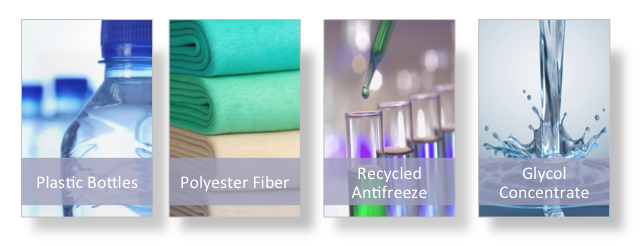
Glycol is a hazardous waste which ranks #23 on the National Pollutant Inventory Substance Profile. During use, glycols become contaminated with dirt, metals and oils which increase their toxicity and can contaminate soils and natural water. Glycols break down in water over a few days to a couple weeks. Because of this rapid biodegradability, the EPA allows disposal by "release to surface waters". However, when glycols break down in water they deplete oxygen levels, which kills fish and other aquatic life. The immediate effect of exposure to ethylene glycol can mean death for humans, animals, birds, fish & plants.
Protects Children, Animals, Fish and Plants
We think recycling can mitigate potential liability as well as reduce costs and boost public image. Some of the contaminents found in used glycols, such as Cadmium and Lead, are considered very dangerous for our environment. The National Waste Minimization Program has included these contaminents in their 31 Priority Chemicals targeted to be eliminated from our industrial waste. GlyEco Technology™ effectively removes these contaminents from all five industrial glycol waste streams and allows for their proper disposal.
And it Saves Money
Great finds
- Casino Not On Gamstop
- Casinos Not On Gamstop
- Casino Not On Gamstop
- Siti Non Aams Legali
- Non Gamstop Casinos UK
- Meilleur Casino En Ligne
- UK Casino Sites Not On Gamstop
- Slots Not On Gamstop
- Non Gamstop Casino UK
- Non Gamstop Casino Sites UK
- Gambling Sites Not On Gamstop
- Casino Zonder Cruks
- UK Casinos Not On Gamstop
- Best Non Gamstop Casinos
- Casas De Apuestas
- Casinos Sin Verificación Casinos Sin Kyc
- Migliori Casino Non Aams
- Meilleur Casino En Ligne
- Casinos Not On Gamstop
- Casinos Not On Gamstop
- Casino Not On Gamstop
- Casino Non Aams
- UK Online Casinos Not On Gamstop
- Casino Non Aams
- Casino Crypto En Ligne
- Casino En Ligne Belgique
- Siti Scommesse Sportive
- ブックメーカー

